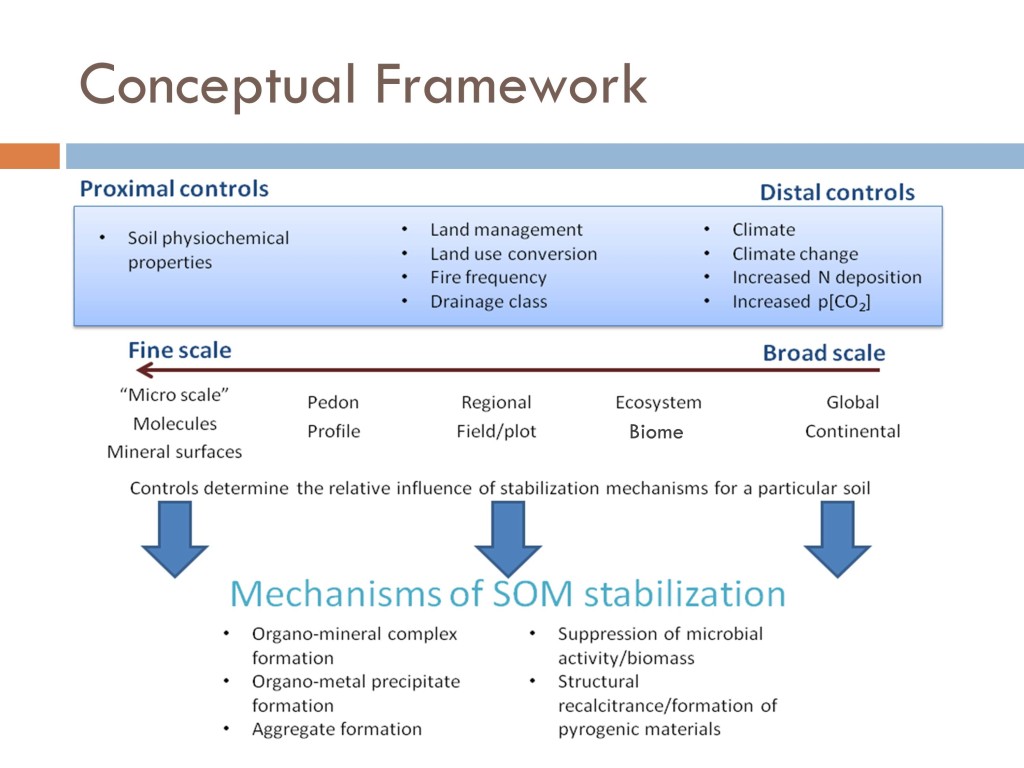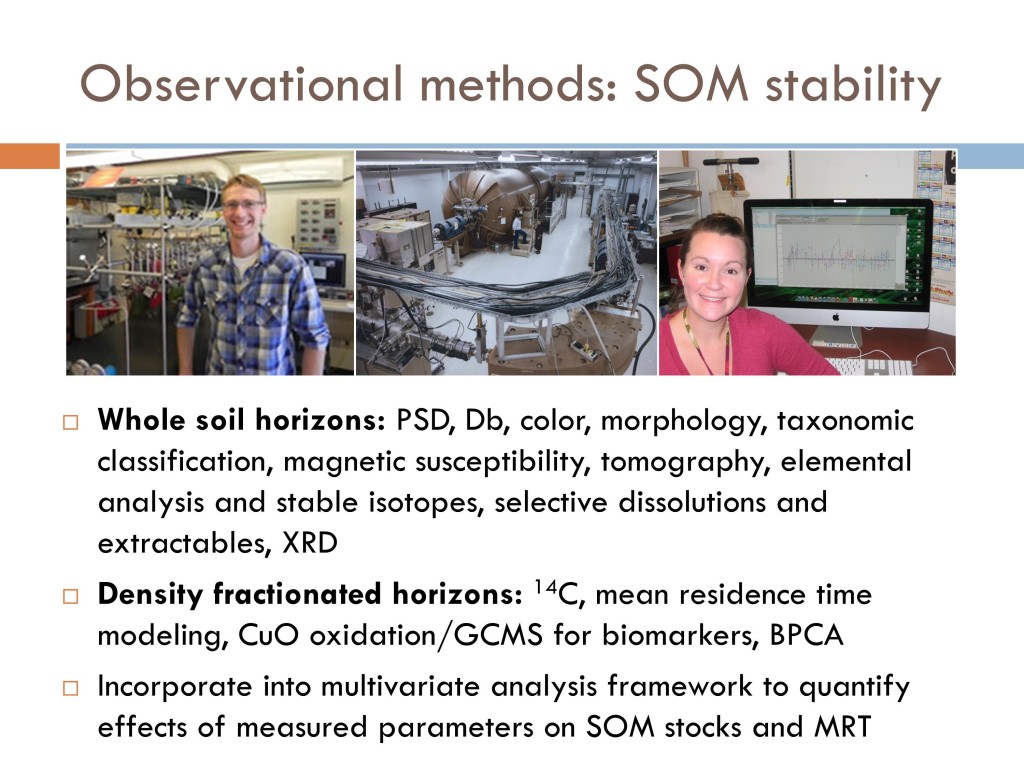A case study in collaborative research: Soil Organic Matter: Mechanisms of Stabilization (SOM-MOS)

Late in 2014 a collaborative team of investigators from the University of Colorado, Oregon State University, Virginia Tech, the University of Michigan, and the USDA-Forest Service began a project supported by NSF (MacroSystems Biology, EF-1340681) to understand mechanisms of SOM stabilization and vulnerability at the continental scale. The project is making use of intact soil cores removed for belowground sensor deployment at 40 sites in the National Ecological Observatory Network. These cores would otherwise have been discarded, but are instead following a multi-institutional analytical workflow, generating a rich characterization dataset and being archived for use by members of the research community. Learn more about our project from this presentation at the 2014 SSSA meeting, read more about it below, or contact our lead PI for information about how to get involved.
Conceptual framework: SOM stabilization/destabilization are processes. Mechanisms are crucial (physico-chemical) steps or conditions in those processes. Controls influence processes, rendering mechanisms more or less effective.

At the extremes of climate, climate controls profoundly influence SOM stabilization. In the temperate middle ground, more proximal factors come into greater play. NEON soils span the North American continent and 11 of 12 USDA soil orders, presenting a superb opportunity to characterize relationships between soil and ecosystem properties and mechanisms of SOM stabilization.
 Of the 10 cores collected at each of 40 sites, 5 are being characterize and described. The other 5 are archived and available for community use. Of the characterized cores, the uppermost mineral, first illuvial, and lowermost pedogenic horizons are being composited, density fractionated, and analyzed.
Of the 10 cores collected at each of 40 sites, 5 are being characterize and described. The other 5 are archived and available for community use. Of the characterized cores, the uppermost mineral, first illuvial, and lowermost pedogenic horizons are being composited, density fractionated, and analyzed.

Observational methods are being complemented by a yearlong, experimental incubation to test temperature, moisture, and land management effects on SOM stability and vulnerability to destabilization. All of these data will ultimately be integrated with the ISCN Database for analysis, spatial prediction, and sharing to support synthesis.
For more information, contact any member of the SOM-MOS team: Mike San Clements, Jeff Hatten, Kate Heckman, Luke Nave, Brian Strahm, and Chris Swanston.
